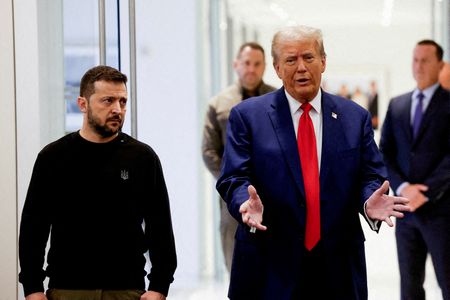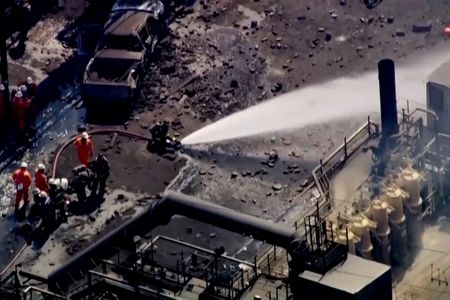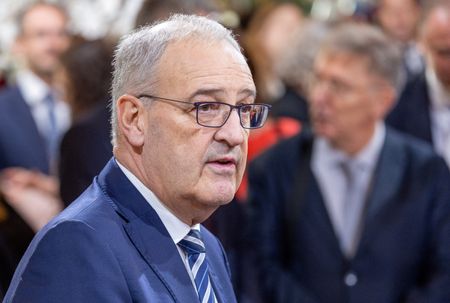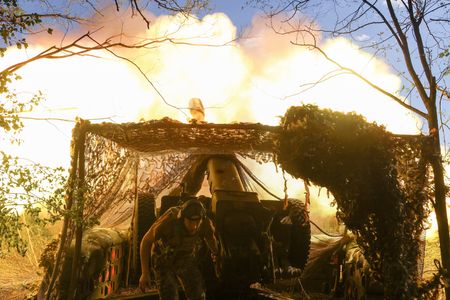KYIV (Reuters) – U.S. Treasury Secretary Scott Bessent arrived in Kyiv on Wednesday to discuss a critical minerals deal as Ukraine vies to win the backing of U.S. President Donald Trump at a perilous diplomatic juncture in the war with Russia.
Trump has said he wants Ukraine to supply the United States with rare earth minerals as a form of payment for financially supporting the country’s war efforts against Russia.
Following is an overview of the critical minerals, including rare earths, and other natural resources in Ukraine that could be of interest to the U.S. and other partners:
WHAT ARE RARE EARTHS AND WHAT ARE THEY USED FOR?
Rare earths are a group of 17 metals used to make magnets that turn power into motion for electric vehicles, cell phones, missile systems, and other electronics. There are no viable substitutes.
The U.S. Geological Survey considers 50 minerals to be critical, including rare earths such as nickel and lithium.
Critical minerals are essential for industries such as defence, high-tech appliances, aerospace and green energy.
WHAT MINERAL RESOURCES DOES UKRAINE HAVE?
Ukraine has deposits of 22 of the 34 minerals identified by the European Union as critical, according to Ukrainian data. They include industrial and construction materials, ferroalloy, precious and non-ferrous metals, and some rare earth elements.
According to Ukraine’s Institute of Geology, the country possesses rare earths such as lanthanum and cerium, used in TVs and lighting; neodymium, used in wind turbines and EV batteries; and erbium and yttrium, whose applications range from nuclear power to lasers. EU-funded research also indicates that Ukraine has scandium reserves. Detailed data are classified.
The World Economic Forum has said Ukraine is also a key potential supplier of lithium, beryllium, manganese, gallium, zirconium, graphite, apatite, fluorite and nickel.
The State Geological Service said Ukraine has one of Europe’s largest confirmed reserves, estimated at 500,000 metric tons, of lithium – vital for batteries, ceramics, and glass.
The country has titanium reserves, mostly located in its northwestern and central regions, while lithium is found in the centre, east and southeast.
Ukraine’s reserves of graphite, a key component in electric vehicle batteries and nuclear reactors, represent 20% of global resources. The deposits are in the centre and west.
Ukraine also has significant coal reserves, though most are now under the control of Russia in occupied territory.
WHAT HAS UKRAINE SAID ABOUT RARE EARTHS?
Ukrainian President Volodymyr Zelenskiy told Reuters on February 7 that he was ready to do a deal with Trump that includes U.S. involvement in developing Ukraine’s huge deposits of critical minerals, including rare earths.
Zelenskiy originally aired the idea in his “victory plan” strategy, presented to Kyiv’s allies last autumn.
Among other things, the plan proposes reaching agreements with foreign partners to provide joint access to Ukraine’s strategically valuable resources.
Mining analysts and economists say Ukraine currently has no commercially operational rare earth mines.
China, with whom Trump has threatened a trade war, is the world’s largest producer of rare earths and many other critical minerals.
WHICH UKRAINIAN RESOURCES ARE UNDER KYIV’S CONTROL?
The war has caused widespread damage across Ukraine, and Russia now controls around a fifth of its territory.
The bulk of Ukraine’s coal deposits, which powered its steel industry before the war, are concentrated in the east and have been lost.
About 40% of Ukraine’s metal resources are now under Russian occupation, according to estimates by Ukrainian think-tanks We Build Ukraine and the National Institute of Strategic Studies, citing data up to the first half of 2024. They provided no detailed breakdown.
Since then, Russian troops have continued to advance steadily in the eastern Donetsk region. In January, Ukraine closed its only coking coal mine outside the city of Pokrovsk, which Moscow’s forces are trying to capture.
Russia has occupied at least two Ukrainian lithium deposits during the war – one in Donetsk and another in the Zaporizhzhia region in the southeast. Kyiv still controls lithium deposits in the central Kyrovohrad region.
WHAT MINING OPPORTUNITIES DOES UKRAINE OFFER?
Oleksiy Sobolev, first deputy economy minister, said in January that the government was working on deals with Western allies including the United States, Britain, France and Italy on projects related to exploiting critical materials. The government estimates the sector’s total investment potential at about $12-15 billion by 2033.
The State Geological Service said the government was preparing about 100 sites to be jointly licensed and developed but provided no further details.
Although Ukraine has a highly qualified and relatively inexpensive labour force and developed infrastructure, investors highlight a number of barriers to investment. These include inefficient and complex regulatory processes as well as difficulty accessing geological data and obtaining land plots.
Such projects would take years to develop and require considerable up-front investment, they said.
(Reporting by Olena Harmash; Editing by Louise Heavens and Gareth Jones)










